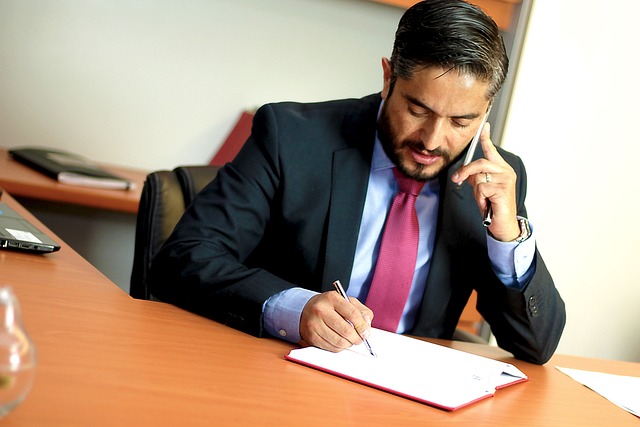Bankruptcy can be terrifying, and it’s easy to think you’ll be ruined if you declare yourself bankrupt.
But don’t let that fear control you! Bankruptcy affects many people every year, and most of them recover successfully—you can too!
Learn how bankruptcy works, how to prevent it from happening to you, and what steps to take if you need to file bankruptcy.
So here’s comprehensive guide on Everything you need to know about bankruptcy don’t let it ruin your life
The basics of bankruptcy

Bankruptcy is a legal process for getting rid of debt. When people talk about bankruptcy, they usually mean Chapter 7 or Chapter 13 bankruptcies.
In a Chapter 7 bankruptcy, the debtor’s assets are sold and the proceeds from the sale are used to pay back some or all of their creditors.
It’s called Chapter 7 because this process involves completely wiping out (or discharging) certain types of debts.
With a Chapter 13 bankruptcy, on the other hand, you repay your debts over time by making monthly payments that are decided in advance with your bankruptcy trustee.
For example, if $5,000 in credit card debt was included in the person’s bankruptcy petition and she makes monthly payments of $50 per month until her obligation is paid off , then she will have repaid her creditor over three years instead of two.
However, with a Chapter 7 bankruptcy, the credit cards would be discharged within one year at most as there is no long-term repayment plan involved.
How to file for bankruptcy
The best way to file for bankruptcy is by consulting with a lawyer. They will help you make the best decision for your situation and can walk you through the process.
Remember, while bankruptcy may seem like an option of last resort, it’s often a better choice than other alternatives.
You deserve to be knowledgeable about what options are available to you before making any decisions that could negatively affect your credit score and impact your future financial stability.
There are many misconceptions about what bankruptcy does and does not do. Bankruptcy law allows people who are struggling financially to get relief from debt so they can start over again.
The different types of bankruptcy
There are two main types of bankruptcy: Chapter 7 and Chapter 13. They both offer protection from creditors, though in different ways.
In the first case, all assets are liquidated by a trustee appointed by the court. The proceeds go to the creditors.
Bankruptcy is not something that should be taken lightly so talk with an attorney before deciding on anything. bankruptcy might become necessary.
If this sounds like you, then make sure to find out more information today! Talk to a lawyer or check out our site for more tips on what you can do.
Determine if bankruptcy is right for you ; there’s no point in filing a bankruptcy petition without knowing how it will impact your credit score, mortgage rates and more.
It’s possible you may have to wait up to ten years before another loan will be available because they’ll help determine whether you’re eligible for bankruptcy.
What assets you can keep after filing for bankruptcy
As soon as a person files for bankruptcy, they have the opportunity to keep a certain amount of assets.
These include:
– up to $1,000 in cash and money on hand – up to $5,000 in personal property (including jewelry and appliances)
– one car, truck or motorcycle – household goods up to $7,500 in value – one home with equity of no more than $160,250 ($320,500 if married filing jointly)
– retirement funds valued at less than $1,283 ($2,565 if married filing jointly).
In some cases, individuals can also keep their entire 401(k) account and IRAs. For example, people who are 55 years old or older may be able to protect their entire IRA accounts from creditors under federal law.
Some states also offer protections for some types of income, such as disability income or alimony payments.
How long bankruptcy stays on your credit report
Bankruptcy stays on your credit report for 10 years, but the effects of bankruptcy can last much longer.
The best way to ensure that bankruptcy doesn’t hurt your future is by avoiding a second filing.
If you are considering filing for bankruptcy, talk with a lawyer before making any decisions. A Chapter 7 filing usually takes 3-5 months and only requires a one time court appearance.
filing might be an option if you owe less than $100,000 in unsecured debt or less than $350,000 in secured debt and have regular income of at least $1,200 per month.
Your monthly payments would pay back some or all of what you owed and could take up to 5 years. It’s important to note that bankruptcy will stay on your credit report for 10 years.
You should avoid a second filing because even though it may be tempting, the consequences can last far longer than just ten years.
The pros and cons of bankruptcy
Bankruptcy can be a good option for those who are looking for relief from debt. However, there are many other circumstances in which bankruptcy may not be the best option.
The pros and cons of personal bankruptcy will depend on a variety of factors including one’s income, tax bracket, and other debts.
Here are some of the benefits of filing for personal bankruptcy:
[ It releases one from the legal obligation to repay certain types of debt.
✓ It offers a fresh star by cancelling out unsecured debt like credit card bills
✓One is able to avoid foreclosure and repossession .
✓If a person owes money to family members, he or she will still owe them after filing for bankruptcy.
however, if the amount owed is less than $14,000 then the person does not have to pay back this type of debt – When people file for bankruptcy, they often lose their ability to borrow money as well as apply for new jobs.
